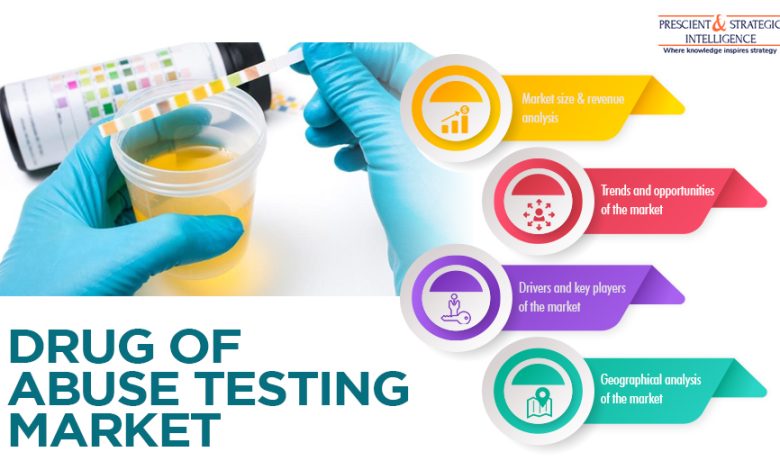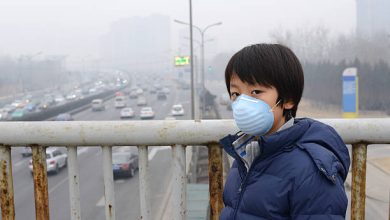How can Technological Advancements Aid in Improving Drug of Abuse Testing Market?

Drug of Abuse Testing Market Overview
The global drug of abuse testing market is predicted to reach a value of $9.1 billion by 2023. From $4.8 billion in 2016. progressing at a 9.6% CAGR during 2017–2023. The market is registering growth because of technological advancements that are focusing on reducing time of consumption. Increasing sensitivity and facilitating detection of novel designer drugs. The rising consumption and trading of illicit drugs is also a key driving factor of the market.
The drug of abuse testing market is divided into consumable and equipment on the basis of product. Between the two the consumables division dominated the market in 2016. As these products are readily available and offer faster test results as compared to equipment. The division is further classified into assay kits & reagents rapid test kits and others out of which. The demand for rapid test kits has been considerable high since they provide results in a short span of time.
When sample type is taken into consideration the drug of abuse testing market is categorized into hair urine, saliva, and others, out of which, the urine category accounted for the major share of the market in 2016. Urine samples comprise secreted metabolites that can be utilized for detecting the presence of illicit drugs. The major end users in the domain are at-home, hospitals, workplace and laboratories, among which, hospitals held the largest share of the market in the past.
Drug of Abuse Testing Market Geographical Analysis
Geographically, North America led the market in the past, accounting for a share of 49.2% in 2016 because of the growing availability of illicit drugs, rising drug trafficking, and increasing workplace monitoring for consumption of illicit drugs. The US held the major share of the market within the region in the past. The Asia-Pacific region is expected to advance at the fastest pace during the forecast period, owing to the surging consumption of illicit drugs and increasing compliance in companies for DOA testing.
A key reason for the expansion of the drug of abuse testing market is the rising use of illicit drugs all over the globe. As per the United Nations Office on Drugs and Crime’s report, the World Drug Report, about 203 million illegal drug users between the ages of 15 years and 64 years were reported, and the number rose to 246 million in 2015. The consumption of drugs is majorly rising among teenagers, which is creating increasing need for DOA testing.
Moreover, technological advancements are occurring in the drug of abuse testing market. The growing usage of DOA tests for medical and legal purposes has made it crucial to provide results with high confidence levels. Owing to this, enhancements are being made in different aspects of DOA testing, such as device and equipment, chemistry, and materials. In addition, governments across the globe are taking various initiatives for reducing drug abuse levels, which is further expected to drive the market.
Drug of Abuse Testing Market Size
Around 20 million people consumed cocaine, while 62 million used opioids for non-medicinal purposes. in 2019 says the United Nations Office on Drugs and Crime. This was because of the constant increase in the production and supply of these substances despite the stringent laws against them. A comprehensive screening system in place at ports, airports, major railway stations, and road borders. Thus there is a strong need to boost educational and awareness raising efforts in order to discourage people from using these products.
Further, there is a strong need to follow an effective consumption check regimen so that drug users can be identified and counseled. This is why P&S Intelligence expects the drug of abuse testing market value to rise to $9.1 billion by 2023 from $4.8 billion in 2016 at a 9.6% CAGR between 2017 and 2023. Such products include breath analyzers and rapid test kits, which can detect the drugs in hair, urine, saliva, blood, and nails, and their various consumables and accessories.
These products might be even more important right now, during the COVID-19 pandemic, than before because drug use is generally associated with a poor financial state and disturbed emotional health. Hence, with the lockdowns implemented during the pandemic rendering a lot of people jobless or with reduced salaries and the movement restrictions forcing people into physical and social isolation, such issues have spurred. As a result, the consumption of several drugs, such as cannabis and pharmaceuticals (non-medical consumption) rose in 2020.
Drug of Abuse Testing Market Revenue Analysis
Apart from the employed and unemployed, a large number of school and college goers use illicit drugs. In fact, as per the UNDOC, young adults and adolescents constitute the biggest drug consumer group. Several reasons can be credited for this peer pressure, family pressure child abuse divorced parents and low self-esteem being just a few of those. Further, these people are affected more by drugs than adults because their brains are still at the developing phase. Therefore take more of a hit from psychoactive compounds.
Moreover, whether young people or grownups, drugs affect one and all, altering the mood, decreasing the daily productivity. Putting people at a risk of self-harm or to others especially those that fire up the neurons and increase the metabolic rate. Diminishing general awareness.
Therefore, DOA testing is now being vigorously conducted at people’s homes by their kin hospitals workplaces, government offices, and laboratories. Among these hospitals are significant because they regularly receive emergency patient transports due to a suspected drug OD. Therefore DOA testing is widely carried out here for diagnostic purposes. Similarly such activities are also being carried out at homes often without the suspected user’s knowledge. Drug usage has several behavioral tell-tale signs that family members can observe over time.
Drug of Abuse Testing Market Trends
Because of the rising production supply and consumption of such harmful substances. Asia-Pacific is set to be the fastest-growing DOA testing market in the years to come. Two of the most-notorious regions in terms of drug supply the Golden Triangle and Golden Crescent are located in APAC. Furthermore over 70% of all illicit opiate drug busts in 2019 happened in Asia close to major production hubs. Moreover cannabis, which is still illegal in many regional countries is easily available and especially popular among the youth.
Thus with illegal drug usage booming around the world the demand for test kits breath analyzers. And other consumables and equipment that can detect their presence inside the human body will only rise.





